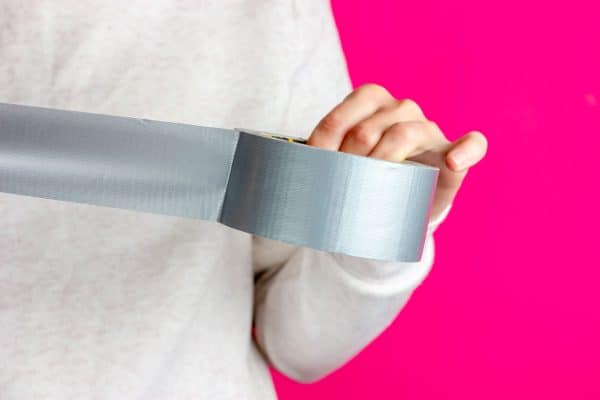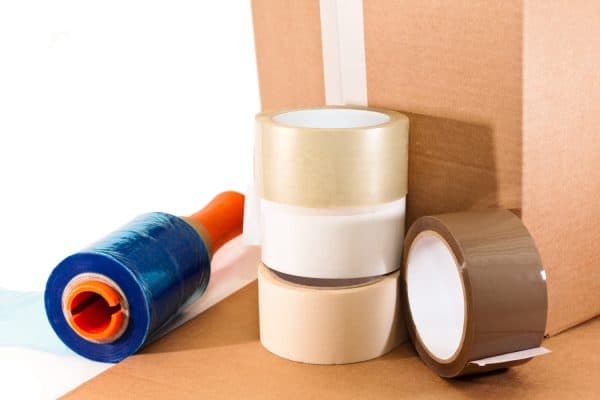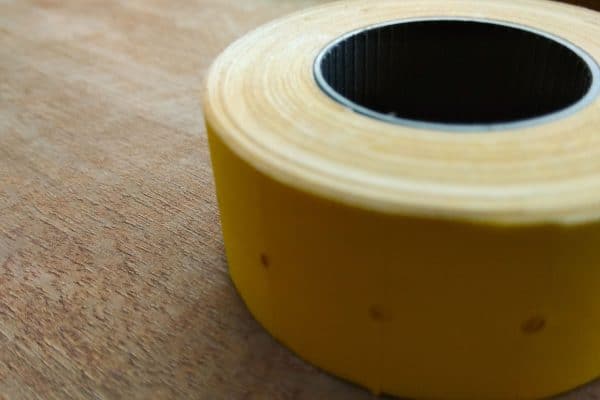Different kinds of packing tape are available on the market. But each model typically has unique features to serve specific purposes. So what are the types of packing tape? We researched for you and here’s what we found.
Users can choose among different kinds of packing tape, including (but not limited to):
- Acrylic Tape
- Duct Tape
- Double-Sided Tape
- Hot Melt Tape
- Masking Tape
Remember, using the wrong tape may result in packing issues. Continue reading as we talk about these types of packing tape in greater detail. We’ll also tackle some reasons why tape might not stick to boxes.
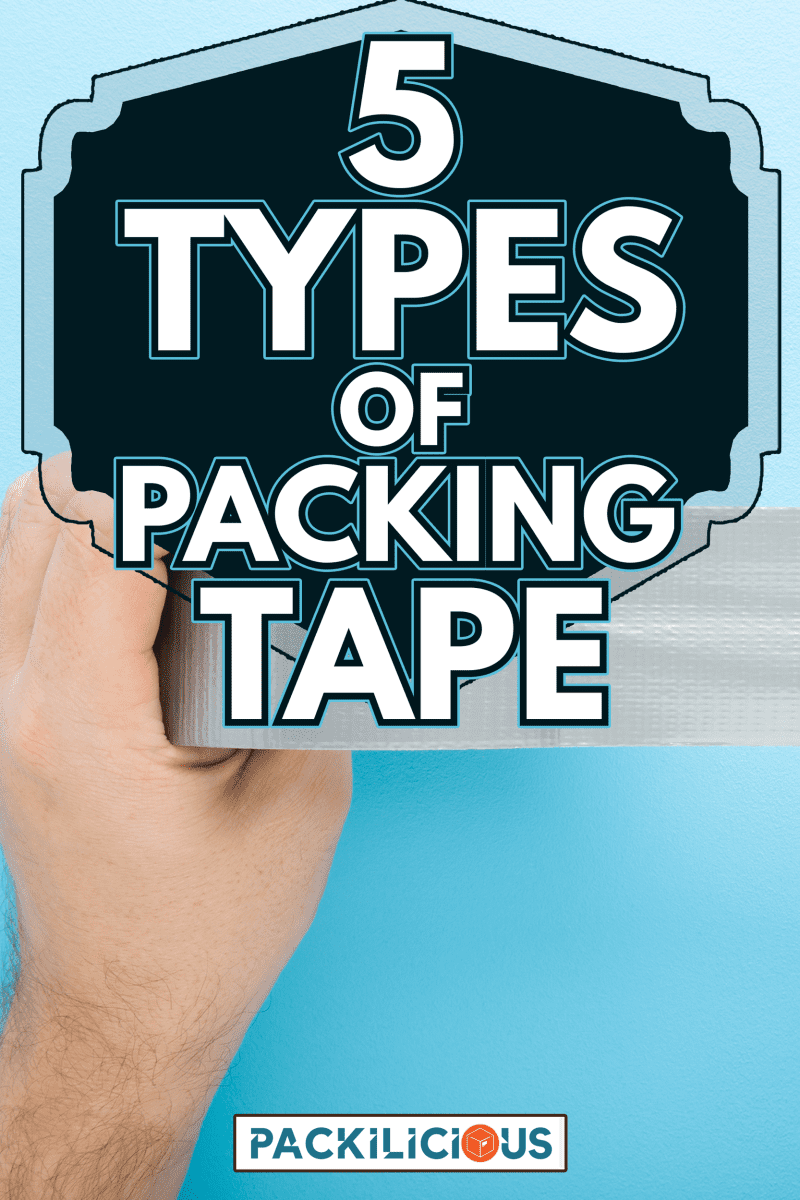
What Are The Types Of Packing Tape?
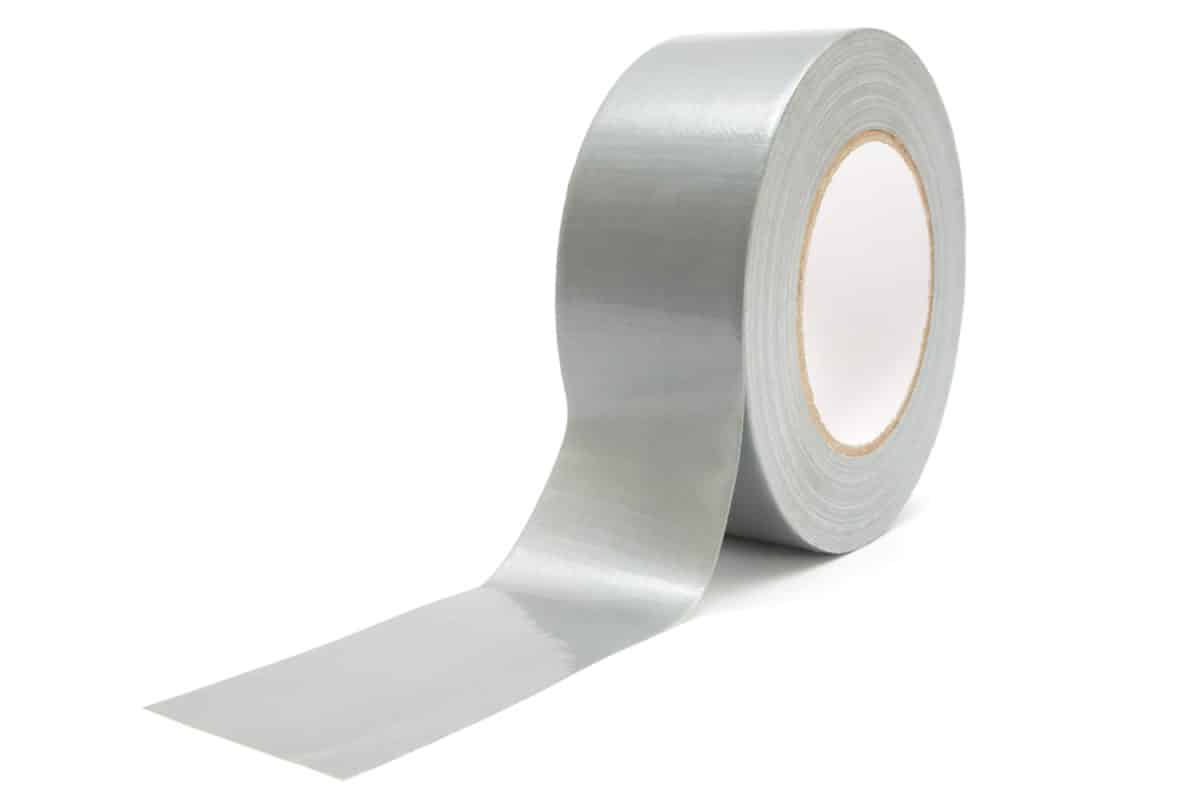
Take note that using the correct tape can help to complete packing tasks easier than expected. On the other hand, using the wrong and unideal packing tape may lead to some issues, such as the product not sticking to the intended surface.
Continue reading through this section to know the different types of packing tape and their general uses.
1. Acrylic Tape
Interested users can find acrylic tape in either water-based or solvent-based adhesives. Water-based acrylic tapes generally have slower drying tames as compared to their solvent-based counterparts.
In comparison, solvent-based acrylic tapes typically have better resistance to substances like chemicals, water, and other solvents.
These types of acrylic tapes can also fall under two subgroups, namely:
Pure Acrylic Tape
Usually granted with excellent spread and UV resistance, pure acrylic tape can help seal different containers made from various materials. It’s also this reason that many individuals may prefer pure acrylic tape in sealing fiber-optics.
Modified Acrylic Tape
Modified acrylic tape generally has highly similar properties to the pure variant. However, this model often has superior adhesion properties, particularly when used to seal plastics.
Check out this acrylic tape on Amazon.
2. Duct Tape
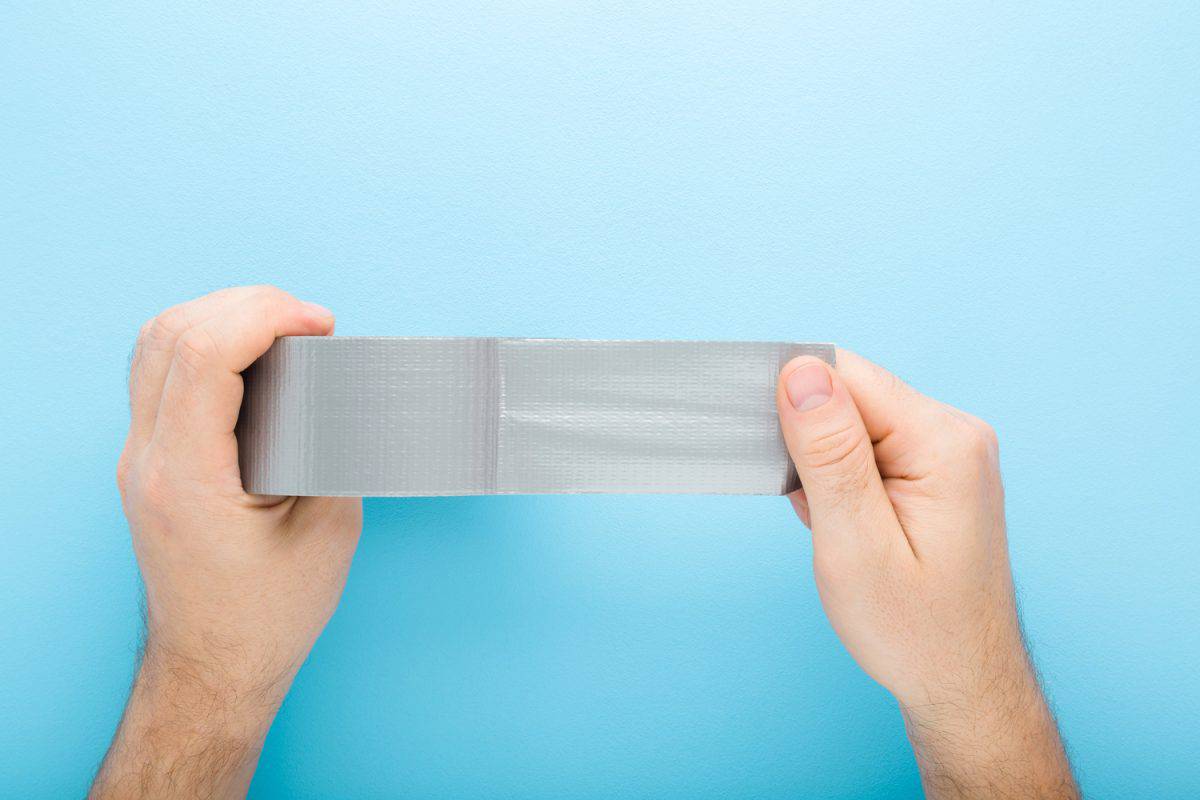
Duct tape primarily uses cloth mixed with polyethylene resin on one side and an adhesive rubber on the other. Perhaps one of this type of packing tape’s most endearing properties is its superb strength.
It often has a maximum strength of 62 pounds, which users can double or triple based on the number of strips used.
One of duct tape’s sought-after uses is to seal crates of ammunition. Some soldiers even refer to it as ‘gun tape,’ for it was also able to properly hold guns and ammo during transport.
In 1971, Jack Kahl, a philanthropist and business entrepreneur, acquired the company that made the original duct tape. Kahl named the new organization 'Manco, Inc.,’ which revolutionized the tape for casual use.
Today, duct tape is now a blanket term since different types of this particular product are now available on the market. Some of these kinds of duct tape are:
- Gaffer’s tape: Typically used in securing items like cables and photo studios.
- Coated cloth tape: Also called ‘mission tape,’ it often plays a vital role in forming seals to stop harmful gases from entering containers.
- Stucco tape: Generally used to seal doors and windows with polyethylene film.
- Industrial-grade: Users can take advantage of this duct tape to seal containers that might otherwise be quite difficult to close using general-purpose adhesives.
Check out this duct tape on Amazon.
3. Double-Sided Tape
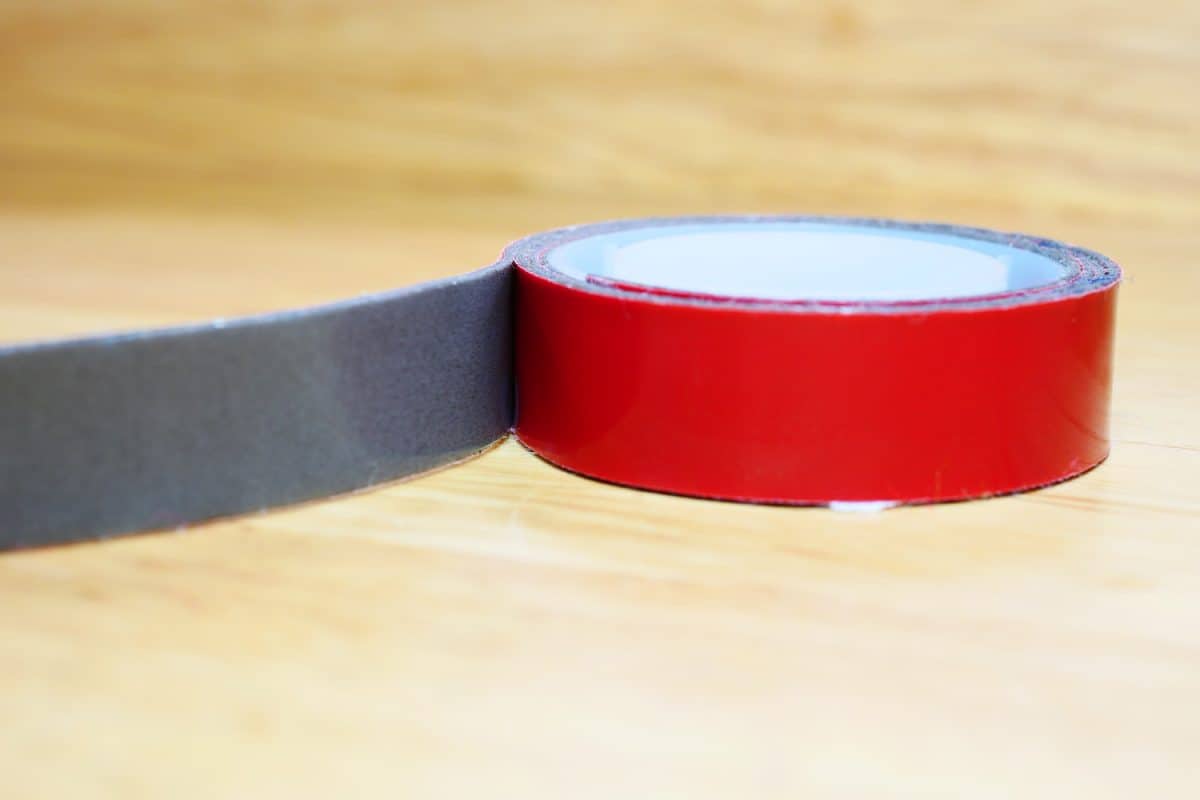
Double-sided packing tape usually has pressure-sensitive adhesives on both its sides. This type of tape often has different thicknesses to cater to different uses. Some variants have thicknesses that are as thin as 1 millimeter.
Also, double-sided tapes typically use different materials based on their thicknesses. Thick variants often use foam backing while thin options have a film-like side. However, some relatively thin double-sided tapes may have no backing material.
Aside from sealing containers, double-sided tapes can also have other applications, such as:
- Floor protection
- Vapor barrier seal
- House wrap
It’s still important to note that some double-sided tapes might not be ideal for some applications. Keep in mind that not every double-sided tape on the market is equal.
For example, some variants are susceptible to damage when exposed to high temperatures. These tapes will often provide sufficient adhesion up to temperatures of 65 degrees Fahrenheit.
That also means that these adhesives may not provide reasonable stickiness if exposed to summer temperatures, particularly in states like Alabama and Florida.
Check out this heavy-duty double-sided tape on Amazon.
4. Hot Melt Tape
Hot melt tapes typically use strong rubber or resin adhesives for packing and other sealing applications. This type of packing tape is often great for sealing corrugated surfaces, thanks to its aggressive sticking nature.
One advantage of these tapes is also reasonably inexpensive, making them ideal for budget-conscious individuals. The low-cost overheads might be thanks in part to the few ingredients needed to manufacture these products. In particular, the use of industrial fans or ovens isn't a typical requirement to develop hot melt tapes.
However, hot melt tapes might not be good for packing or sealing thin or fragile materials like laminate. These adhesives generally have rough surface textures, which can harm impressionable surfaces.
It can also turn yellow when exposed to UV rays for extended periods. That yellowing can also spread through other materials, creating risks of harm to other products’ aesthetics.
Check out this hot melt tape on Amazon.
5. Masking Tape
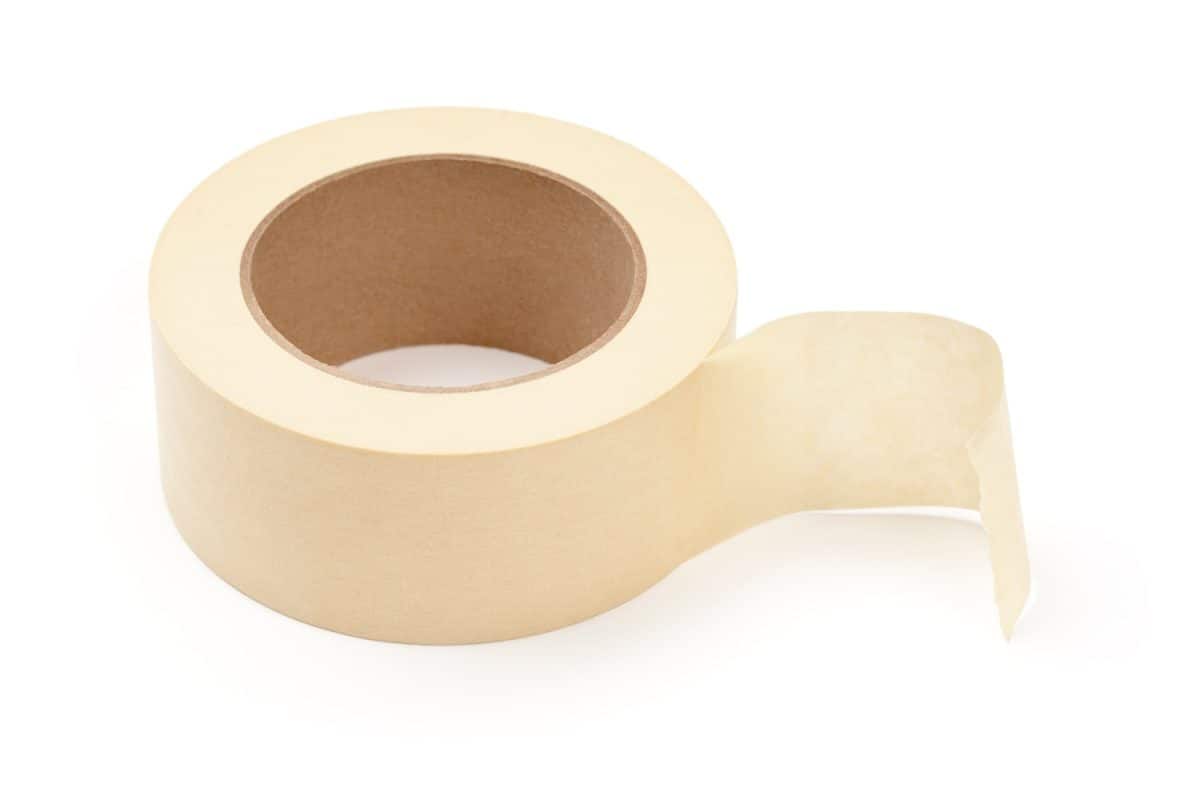
Manufacturers often use two layers to create masking tapes. The first layer is usually a thin yet saturated crepe paper material that users can easily tear with their hands. It also promotes convenience during use since cutting tools aren’t dire requirements to tear pieces of masking tapes from their rolls.
A masking tape’s other layer can be one of three substances: acrylic, hot melt, or a solvent-free material. Interested users should pay attention to these materials for each option has different levels of adhesion.
Masking tape can also be a practical choice for many packers and DIY enthusiasts, thanks to its excellent versatility. Aside from packing objects and sealing boxes, some people can use this type of packing tape for other applications, including:
- As a supporting adhesive for glue.
- To measure distances for drilling and other DIY tasks.
- Mark areas to stop cutting, providing protection from possible injuries.
- Remove dirt, grime, and small debris from objects and tricky corners.
- Wrap and seal presents.
Although quite inexpensive, it’s still often optimal to use high-quality masking tape for certain applications. Low-quality variants may have adhesive backings that leave a residue. These leftovers can also be sometimes challenging to remove.
Also, some masking tape options may still allow paint and other liquids to seep through them, damaging the objects they’re trying to safeguard.
Interested buyers shouldn’t confuse masking tape with painter’s tape. The latter is a special type of masking tape that has a low tack, which doesn't usually provide an excellent seal for packing applications.
However, painter's tape can still prevent paint from seeping through it without the high risk of leaving residue from its adhesive backing.
Check out this masking tape on Amazon.
What Is The Difference Between Packing Tape And Masking Tape?
Masking tape is often a good choice to pack and/or seal different yet specific objects to prevent paint and other coloring materials from dripping or splashing onto those surfaces.
On the other hand, packing tape can be different types of adhesives, such as duct tape, double-sided tape, and masking tape.
What Packing Tape Is The Strongest?
Many individuals put Gorilla duct tape in high regard because of its high-strength adhesive. Gorilla duct tape is reasonably tough as it can hold up to 85 pounds without tearing.
Its adhesiveness also doesn’t diminish significantly when splashed. Despite its reasonable strength, Gorilla tape is still relatively easy to tear by hand for easy applications.
Check out this product on Amazon.
How To Use A Handheld Packing Tape Dispenser?
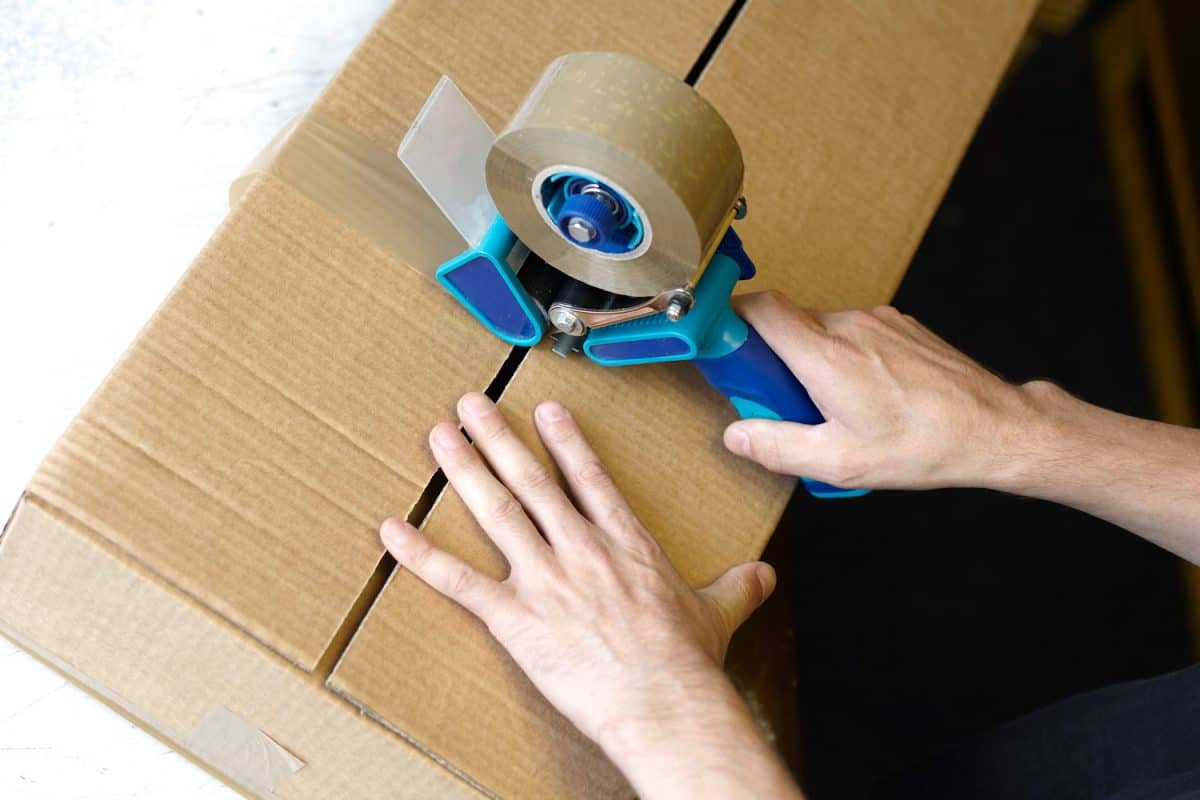
Keep in mind that different handheld packing tape dispensers may have unique steps for use. Still, the following guide should help users use many different handheld tape dispensers properly:
Step-by-Step Guide
- Press the handheld tape dispenser on the surface firmly.
- Glide the tool along the surface, which should make it dispense tape and its roller roll.
- Tilt the dispenser forward and/or twist it to cut the tape.
Watch the video below if you want a visual representation of the steps mentioned above:
How Do You Get Packing Tape To Stick To Box?
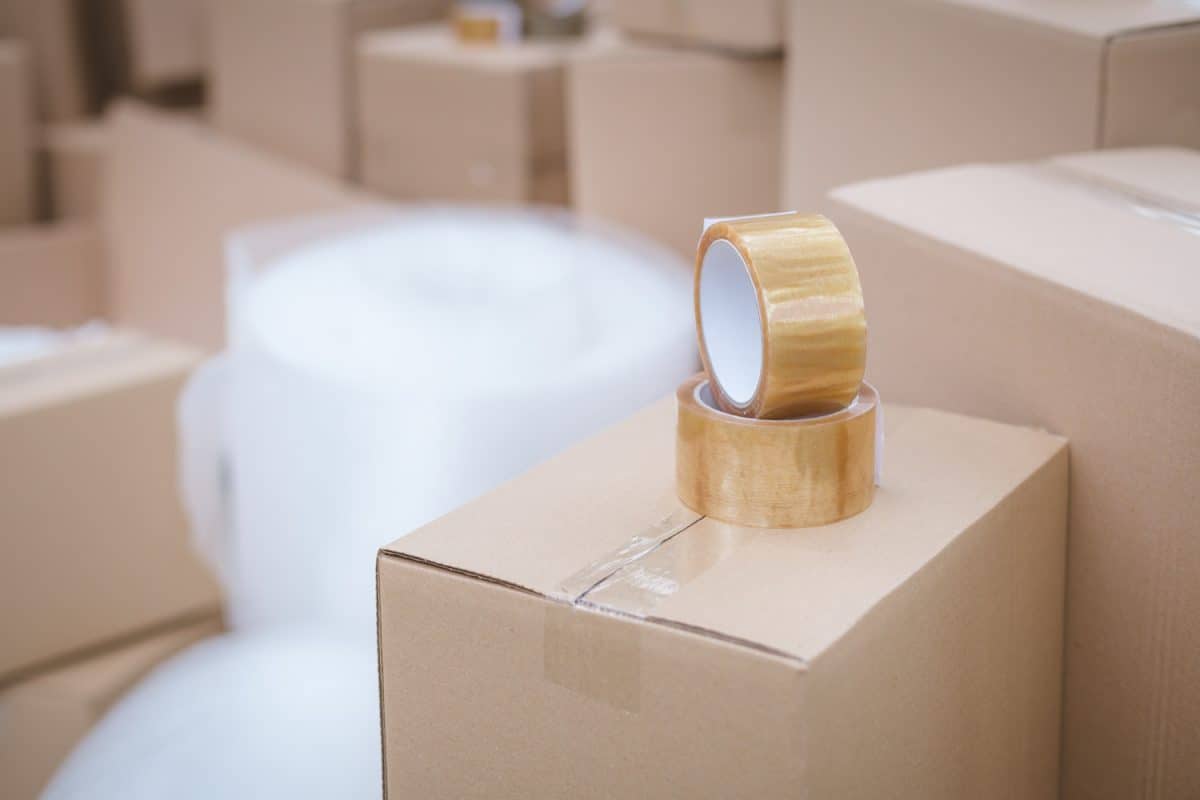
Some packing tapes may not stick to boxes because of certain reasons. The reasoning for these events might include:
- It’s the wrong type of packing tape. Keep in mind that some packing tapes are generally best-suited for certain applications.
- It needs water. Some tapes, such as paper tape, need water to activate their adhesive properties.
- The box and/or its containers is/are cold. Cold temperatures may make some adhesives less effective than expected.
- The packing tape is old. Take note that adhesives often have shelf lives of 6 months to 2 years.
Upon looking at the information above, users should be able to come up with the correct actions to ensure their packing tapes stick to boxes. For example, buy new tape if the one at home already passed its expiry date.
Final Words
It’s important to use the correct packing tape to avoid problems. If not, objects may fall from their containers because of an improper seal.







